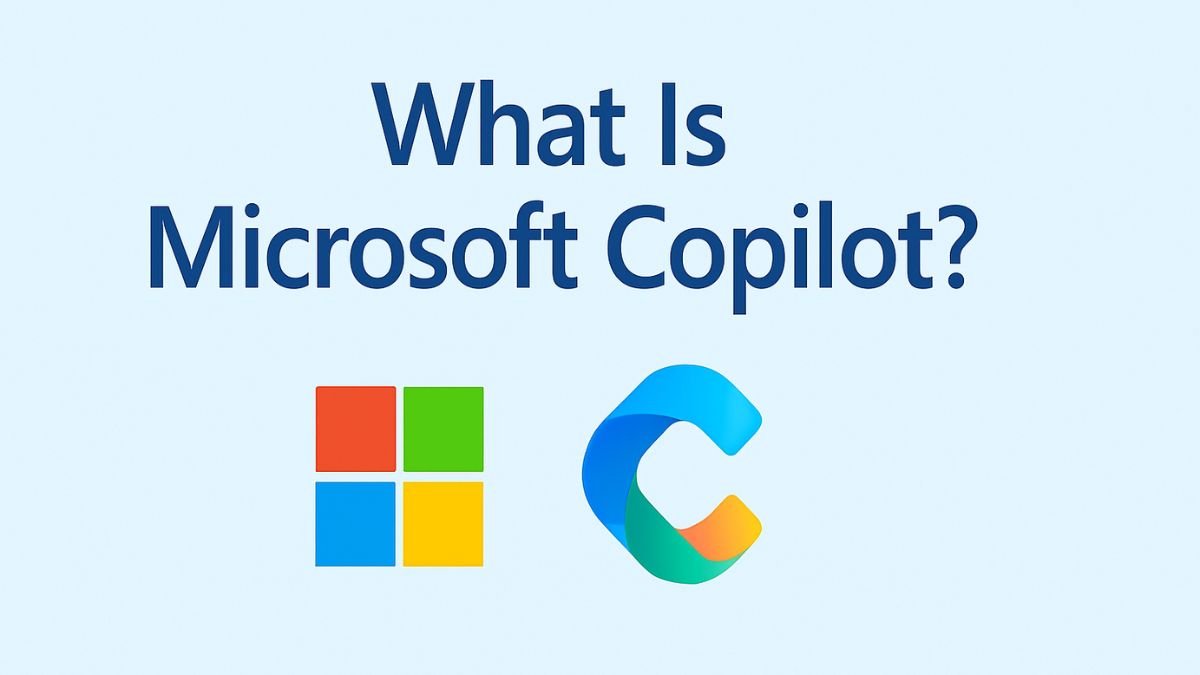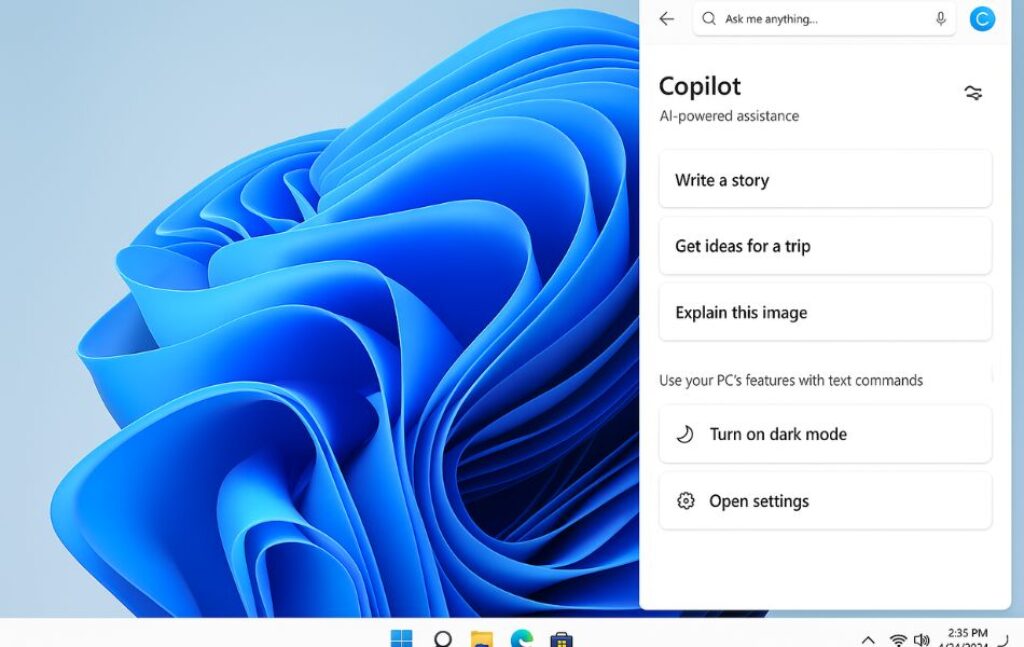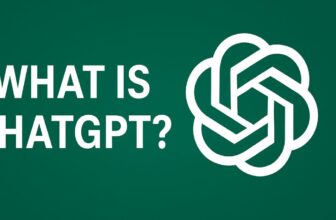
Artificial intelligence is changing the way we use computers and get work done every day. Microsoft Copilot is a smart AI helper built into many Microsoft products to make life easier. It can help you write emails, create documents, analyze data, and even manage your computer settings—all by understanding simple instructions you type or say. One of the newest and most exciting versions is Windows Copilot, which is built right into Windows 11.
With Windows Copilot, you can control your PC, get answers, and complete tasks faster without needing to search through menus or open many apps. This guide will explain what Microsoft Copilot is, the different versions available, and how Windows Copilot can make your daily computer use smoother and more efficient. Whether you’re new to AI or a tech pro, this article will help you understand the power of Microsoft’s AI assistant.
What is Microsoft Copilot?
Microsoft Copilot is an AI-powered assistant integrated into Microsoft’s suite of products to help users work smarter and faster. It uses advanced artificial intelligence, including technologies like OpenAI’s GPT models, to understand natural language commands and generate helpful responses or actions. Instead of manually performing repetitive or complex tasks, Copilot lets you simply ask or tell it what you need, and it takes care of the rest.
At its core, Copilot acts as a digital co-worker embedded in Microsoft 365 apps (like Word, Excel, Outlook, and PowerPoint) and in Windows itself, providing personalized assistance, content creation, data analysis, and system management.
For example, instead of drafting a long email from scratch, you can ask Copilot to write one for you. Or you can have it analyze a spreadsheet and highlight important trends without writing complicated formulas. With Copilot, Microsoft aims to bring AI-powered productivity tools directly to users’ fingertips, simplifying workflows and boosting creativity across personal and professional tasks.
How Does Microsoft Copilot Work?
Microsoft Copilot works by combining powerful artificial intelligence with your data and context to help you get things done faster and smarter. Here’s how it operates step-by-step:
- Understanding Your Instructions: You give Copilot a command by typing or speaking in natural language—just like talking to a person. For example, you might say, “Create a summary of this report,” or “Schedule a meeting for next week.”
- Processing with AI Models: Behind the scenes, Copilot uses advanced AI models (like GPT-4) to understand exactly what you want. These models are trained on vast amounts of information, enabling them to generate meaningful, human-like responses or actions.
- Context Awareness: Copilot doesn’t just listen to your words—it also understands the context. It looks at your current document, emails, calendar, or system settings to give relevant, personalized help.
- Generating Outputs: Once Copilot understands your request and context, it generates the desired output. This could be a written draft, an email reply, a data analysis, a system change, or even a new PowerPoint slide.
- Seamless Integration: Copilot works directly inside your apps and Windows, so you don’t need to switch between tools. You get help exactly where you’re working, saving time and reducing distractions.
- Learning Over Time: Copilot learns from your usage patterns and feedback to improve its suggestions, becoming more helpful and tailored to your needs the more you use it.
In short: Microsoft Copilot listens, understands, thinks, and acts — making your work easier and more efficient through AI-powered assistance.
Versions of Microsoft Copilot: An Overview
Microsoft has developed several Copilot variants tailored to specific products and user needs:
1. Microsoft 365 Copilot
Launched in early 2023, this version embeds AI assistance directly into Microsoft 365 apps:
- Word: Generate documents, draft emails, create summaries, rewrite content
- Excel: Analyze data, create formulas, generate charts automatically, provide insights
- PowerPoint: Create presentations from simple text prompts or existing documents
- Outlook: Summarize long email threads, draft replies, schedule meetings
- Teams: Summarize meetings, suggest action items, transcribe conversations
Microsoft 365 Copilot focuses on boosting productivity for knowledge workers by combining natural language commands with data-driven insights.
2. Dynamics 365 Copilot
Designed for customer relationship management (CRM) and business processes, Dynamics 365 Copilot helps sales teams, customer service agents, and marketing professionals by automating data entry, generating personalized customer messages, predicting customer needs, and providing AI-driven recommendations.
3. Power Platform Copilot
Embedded into Power Apps, Power Automate, and Power BI, this variant enables users to create custom apps, automate workflows, and generate business intelligence insights using natural language prompts — no coding required.
4. Windows Copilot
Windows Copilot is the latest and perhaps the most transformative evolution, integrating AI assistant capabilities directly into the Windows 11 operating system itself. Unlike earlier versions focused on productivity apps, Windows Copilot acts as a system-level assistant, helping users interact with the entire Windows environment more intuitively and efficiently.
Deep Dive: What is Windows Copilot?
Windows Copilot is Microsoft’s AI assistant embedded into Windows 11, designed to streamline how users engage with their PC. Accessible via a simple sidebar or taskbar icon, Windows Copilot enables users to control and customize the entire OS experience with natural language commands and contextual AI help.

Key Features of Windows Copilot:
- System Control via Natural Language: Adjust settings (Wi-Fi, Bluetooth, volume), launch apps, manage files, or customize the desktop simply by typing or speaking commands.
- Contextual Help: Get explanations, tips, and step-by-step instructions for Windows features, troubleshooting, or app usage directly from Copilot.
- Unified Search and Command Center: Quickly find documents, emails, or system utilities using AI-enhanced search.
- Productivity Boosts: Compose emails, generate quick notes, summarize content, or organize your schedule without leaving the desktop.
- Integration with Microsoft 365: Access Microsoft 365 Copilot features seamlessly alongside OS controls, making workflows smoother.
- Personalized Recommendations: Windows Copilot learns your habits and preferences to proactively suggest productivity tips or system optimizations.
How to Access Windows Copilot
Windows Copilot is integrated into Windows 11 and is accessible by clicking the Copilot icon on the taskbar or using a keyboard shortcut (often Windows + C, depending on your build). This opens a sidebar where users can type commands, ask questions, or get help.
Practical Uses of Microsoft Copilot
Microsoft Copilot is an AI-powered assistant integrated into Microsoft 365 applications like Word, Excel, PowerPoint, Outlook, and Teams. It leverages advanced natural language processing and machine learning to help users complete tasks faster and more effectively. Here are some of its key practical uses:
Document Creation and Editing: Copilot helps users draft, edit, and refine documents with ease. Whether you’re writing emails, reports, proposals, or essays, Copilot can generate text based on prompts you provide. It suggests improvements for grammar, tone, and style, helping to produce polished and professional documents. It can also summarize long documents or emails, pulling out the most important points to save time during review.
Data Analysis and Visualization: In Excel, Copilot transforms how users work with data. You can ask it to analyze datasets and generate insights using natural language queries like, “Show me sales trends over the past year” or “Create a pivot table summarizing expenses by category.” Copilot can automate complex calculations, build charts, and clean data, making it easier for non-experts to perform advanced data analysis without deep technical knowledge.
Coding Assistance: For developers, Copilot serves as a coding partner. It offers code suggestions, autocompletes functions, and helps generate boilerplate code, speeding up development. Additionally, it assists in debugging by identifying potential errors and suggesting fixes. This reduces coding time and improves accuracy, especially for routine or repetitive coding tasks.
Meeting and Communication Support: Copilot enhances productivity in meetings by transcribing conversations and generating concise summaries with key takeaways, decisions, and action items. This reduces the need for manual note-taking and ensures everyone stays on the same page. It also helps draft follow-up emails or meeting invitations, streamlining communication after meetings.
Task Automation and Workflow Management: Users can leverage Copilot to automate repetitive tasks such as data entry, formatting, or scheduling. For example, it can help manage calendars by suggesting optimal meeting times or remind users of upcoming deadlines. In email management, Copilot can prioritize important messages and draft responses, saving time on daily administrative work.
Creative Content Generation: Copilot is useful for creative work like generating marketing copy, social media posts, presentation content, and even brainstorming new ideas. It can help draft engaging headlines, slogans, or storylines based on simple prompts, aiding marketers, content creators, and communicators in producing content quickly.
Presentation Design: In PowerPoint, Copilot can create or enhance presentations by generating slide content, designing layouts, and suggesting visuals based on the topic. Users can input a rough idea or data, and Copilot helps turn it into a polished, professional presentation, reducing the time spent on design.
Knowledge Discovery: Copilot can help users quickly find information within large document repositories or emails by searching and summarizing relevant content based on natural language queries. This is especially useful for research, legal work, or any task that requires sifting through large amounts of information quickly.
In summary, Microsoft Copilot’s practical uses span across document creation, data analysis, coding, meetings, task automation, creative work, presentations, and information retrieval. It serves as a powerful assistant that boosts productivity, simplifies complex tasks, and helps users focus on higher-value work by handling time-consuming and repetitive processes.
Microsoft Copilot security and privacy
Microsoft Copilot is built with strong security and privacy measures to protect user data and comply with organizational and legal requirements. Since Copilot integrates deeply with Microsoft 365 applications and accesses sensitive business information, Microsoft has implemented multiple layers of protection to ensure safety and confidentiality.
Users and organizations maintain full ownership of their data, and Microsoft does not use this data to train its AI models unless explicitly permitted. Data processed by Copilot remains within the user’s own Microsoft 365 tenant environment, ensuring strict data isolation and preventing any cross-tenant data leakage. This means that data from one organization is never shared with another.
Copilot complies with major global privacy and security standards such as GDPR, HIPAA, and ISO/IEC 27001, among others. These certifications ensure that personal and sensitive information is handled according to rigorous regulations and best practices. Data transmitted and stored by Copilot is encrypted using industry-standard protocols both in transit and at rest, leveraging Microsoft’s secure cloud infrastructure like Azure, which offers robust physical and network security.
Microsoft also emphasizes transparency in Copilot’s AI usage. Users are clearly informed when AI-generated suggestions or content are provided. To reduce the risk of generating harmful or biased outputs, Copilot undergoes continuous safety and fairness testing. Access to data by Copilot strictly respects the existing Microsoft 365 permissions, only allowing access to information that the user is authorized to view or edit. Administrators have tools to control, monitor, and audit how Copilot is used within their organization, providing an additional layer of governance.
Furthermore, Microsoft continually monitors Copilot for potential security vulnerabilities and regularly updates the system with patches and improvements. These ongoing efforts ensure that security and privacy protections evolve alongside emerging threats, keeping user data safe.
Overall, Microsoft Copilot’s security and privacy framework is designed to enable organizations to leverage AI-powered productivity tools confidently, without compromising the confidentiality or integrity of their sensitive information.
How is Microsoft Copilot different than other generative AI tools?
Microsoft Copilot is deeply integrated into the Microsoft 365 ecosystem, meaning it works directly inside familiar apps like Word, Excel, PowerPoint, Outlook, and Teams. Unlike standalone AI tools that require separate platforms or workflows, Copilot seamlessly enhances the productivity tools millions already use every day, making AI assistance part of their natural workflow without switching apps.
Another key difference is enterprise-grade security and compliance. Since Copilot operates within Microsoft’s trusted cloud infrastructure and adheres to strict privacy standards (like GDPR, HIPAA, and ISO certifications), it offers a level of data protection and governance that many standalone AI tools can’t guarantee. This makes it especially suitable for organizations that handle sensitive or regulated data.
Microsoft Copilot also leverages your organization’s own data stored in Microsoft 365—such as documents, emails, calendars, and chats—to provide contextual, personalized suggestions. This context-awareness means its outputs are more relevant and tailored to your specific work environment, unlike generic AI models that only rely on publicly available data or broad training sets.
In addition, Copilot benefits from continuous Microsoft support, integration with enterprise IT controls, and the ability for admins to manage access and monitor use. This provides a more controlled and scalable AI deployment across businesses.
Lastly, while many generative AI tools focus on content creation or coding in isolation, Copilot covers a broad range of productivity tasks—document drafting, data analysis, meeting summarization, email management, and more—making it a versatile assistant embedded in everyday work.
In short, Microsoft Copilot is different because it is a secure, integrated, context-aware AI assistant built into trusted Microsoft tools, designed specifically to enhance real-world productivity within organizations.
The history and future of Copilot
- Early Development and Partnership: Microsoft began exploring AI integration in productivity tools around 2021–2022, collaborating closely with OpenAI to leverage advanced generative AI models.
- Initial Launch: In 2023, Microsoft introduced Copilot features to select Microsoft 365 users, providing AI-powered assistance for tasks like document drafting, data analysis, and meeting summaries.
- Expansion and Improvement: Following initial feedback, Microsoft expanded Copilot’s capabilities, deepening its integration into Microsoft 365 apps and enhancing AI accuracy, security, and privacy.
Looking ahead, the future of Copilot is promising and centered on becoming an even more proactive and intuitive assistant. Microsoft aims to enhance its AI models to offer more personalized, context-aware help, anticipating user needs and automating complex workflows. Integration with other Microsoft services and third-party apps is expected to grow, creating a more connected and intelligent work environment.
Additionally, Microsoft plans to leverage advancements in multimodal AI—combining text, images, voice, and video—to make interactions with Copilot more natural and versatile. As AI ethics and trust remain priorities, ongoing investments will focus on transparency, bias mitigation, and user control.
- More Proactive and Personalized Assistance: Copilot is expected to become increasingly intuitive, anticipating user needs and offering tailored, context-aware suggestions.
- Broader Integration: Microsoft plans to connect Copilot with more Microsoft services and third-party applications to create a seamless and intelligent workflow ecosystem.
- Multimodal AI Capabilities: Future versions will likely support multiple input modes like text, images, voice, and video, enabling more natural and versatile interactions.
- Focus on Ethics and Trust: Continued emphasis on transparency, bias mitigation, and user control to ensure responsible and trustworthy AI use.
- Automation of Complex Workflows: Copilot will evolve to handle more sophisticated tasks, automating complex processes across various industries and roles.
Conclusion
Microsoft Copilot is a game-changing AI assistant ecosystem designed to enhance productivity and usability across Microsoft’s products. The Windows Copilot variant marks a major milestone by embedding this AI assistant directly into the operating system, creating a unified, intelligent, and intuitive user experience.
Whether you’re an everyday user, professional, or IT admin, Windows Copilot promises to simplify tasks, boost creativity, and streamline workflows with AI-powered assistance at your fingertips. Stay tuned as Microsoft continues to evolve Copilot into a smarter, more helpful AI partner integrated deeply within the Windows OS and Microsoft 365 universe.






![5 Best Gaming PC under $1000 in 2025 [Prebuilt]](https://www.geeksdigit.com/wp-content/uploads/2025/04/GAMING-PC-UNDER-1000-336x220.jpg)